The Brazos Review: AMD's E-350 Supplants ION for mini-ITX
by Anand Lal Shimpi on January 27, 2011 6:08 PM ESTAMD has been curiously absent from the value netbook and nettop segments since Atom’s arrival nearly three years ago. These markets are highly profitable only for component vendors, as the OEMs that sell netbooks and nettops must survive on very slim margins in order to hit aggressive price points. It wasn’t too long ago that we were shocked by $699 desktop PCs, but to now be able to get a fully functioning portable PC with display at below $300 is impressive. In order for the profit equation to work out however, you can’t simply scale down a larger chip - you need an architecture targeted specifically at the type of very light workloads you expect to encounter in these segments. Underclocking and undervolting an architecture targeted at high end desktops or servers won’t cut it.
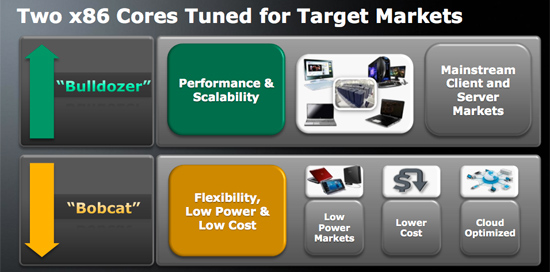
Generally a single microprocessor architecture can cover an order of magnitude of power envelopes. You can take an architecture from 10W - 100W using clock speed, voltage scaling and disabling features (e.g. cutting cache sizes). You can’t efficiently take a 100W architecture and scale it down to 1W. Intel realized this with Atom, and what resulted was a new architecture designed to span the 0.5W - 5W range. Given the constraints of the process (Atom was built at 45nm) and a desire to keep die size down to a minimum (and thus maximize profits), Intel went with a dual-issue in-order architecture reminiscent of the old Pentium - but with a modern twist.
AMD came to the same realization. For it to compete in these value markets, AMD couldn’t rely on its existing Phenom II derived architectures. The Phenom II and its relatives currently span a range of TDPs from 9W to 140W, and at the lower end of that spectrum we’re talking about some very low clock speeds and performance targets. Getting down to 1W was out of the question without a separate design.
What AMD came up with was a core called Bobcat, initially targeted for netbooks, notebooks, nettops and entry level desktops. Architecturally Bobcat is a significant step ahead of Atom: while still dual-issue, it features an out-of-order execution engine making it the Pentium Pro to Atom’s Pentium.
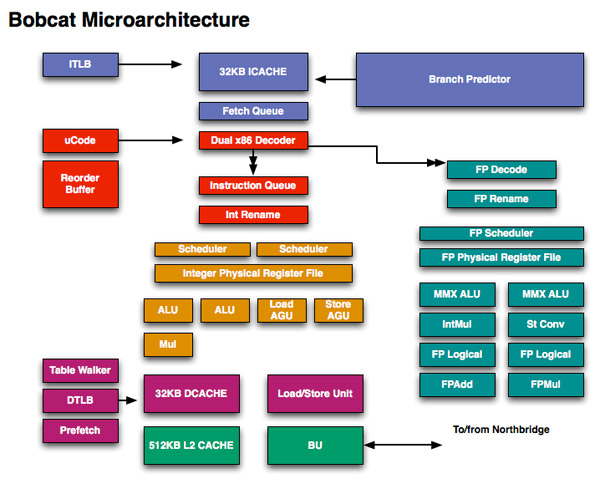
It isn’t just CPU architecture that AMD surpassed Atom with, the first incarnation of Bobcat is an integrated SoC with on-die DirectX 11 GPU. AMD calls this combination a Fusion APU (Accelerated Processing Unit) as it places both a CPU and GPU on a single die. The possible CPU/GPU combinations for Bobcat based APUs are listed in the table below:
| AMD Brazos Lineup | ||||||||
| APU Model | Number of Bobcat Cores | CPU Clock Speed | GPU | Number of GPU Cores | GPU Clock Speed | TDP | ||
| AMD E-350 | 2 | 1.6GHz | Radeon HD 6310 | 80 | 500MHz | 18W | ||
| AMD E-240 | 1 | 1.5GHz | Radeon HD 6310 | 80 | 500MHz | 18W | ||
| AMD C-50 | 2 | 1.0GHz | Radeon HD 6250 | 80 | 280MHz | 9W | ||
| AMD C-30 | 1 | 1.2GHz | Radeon HD 6250 | 80 | 280MHz | 9W | ||
AMD avoided branding its first APUs, they’re simply the AMD E-series and C-series Fusion APUs. The emphasis isn’t on the CPU or the GPU in this case, just the company name and a model number.
| CPU Specification Comparison | ||||||||
| CPU | Manufacturing Process | Cores | Transistor Count | Die Size | ||||
| AMD Zacate | 40nm | 2 | ? | 75 mm2 | ||||
| AMD Thuban 6C | 45nm | 6 | 904M | 346mm2 | ||||
| AMD Deneb 4C | 45nm | 4 | 758M | 258mm2 | ||||
| Intel Gulftown 6C | 32nm | 6 | 1.17B | 240mm2 | ||||
| Intel Nehalem/Bloomfield 4C | 45nm | 4 | 731M | 263mm2 | ||||
| Intel Sandy Bridge 4C | 32nm | 4 | 995M | 216mm2 | ||||
| Intel Lynnfield 4C | 45nm | 4 | 774M | 296mm2 | ||||
| Intel Clarkdale 2C | 32nm | 2 | 384M | 81mm2 | ||||
| Intel Sandy Bridge 2C (GT1) | 32nm | 2 | 504M | 131mm2 | ||||
| Intel Sandy Bridge 2C (GT2) | 32nm | 2 | 624M | 149mm2 | ||||
These APUs do need the aid of an additional chip - the Hudson Fusion Controller Hub (FCH). The FCH adds support for things like SATA, USB, Ethernet and Audio.The Hudson FCH is very tiny measuring approximately 4mm x 7mm for a total die size of around 28mm2.
The combination of these Bobcat based APUs and the FCH is called the Brazos platform.
Late last year AMD invited me to spend several hours with a Brazos system at its brand new campus in Austin, TX. While the preview gave us some insight into what we could expect from Brazos, I didn’t have enough time to really dive in as much as I would’ve liked to.
Earlier this month, AMD officially launched Brazos with hardware expected sometime this quarter. For the past couple of weeks I’ve been testing a Brazos mini-ITX motherboard from MSI and today, it’s time to break the silence and share the results. They are quite good.


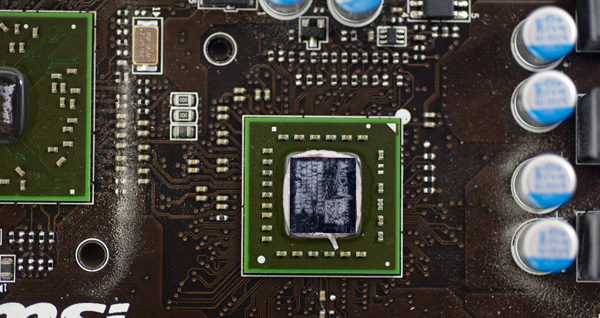
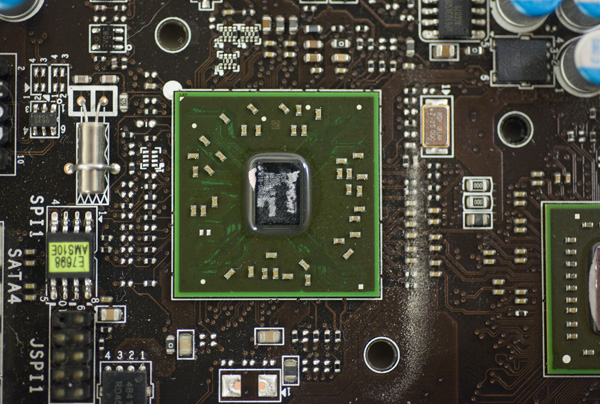
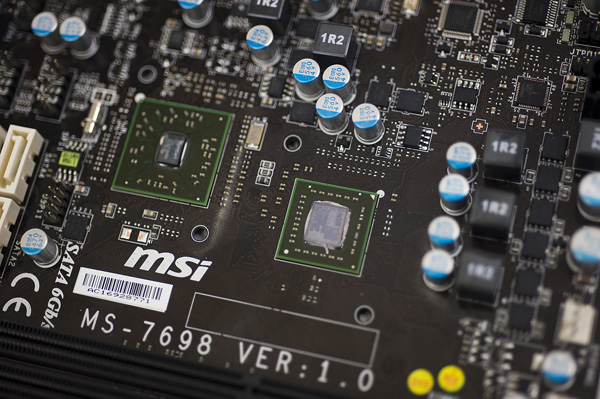
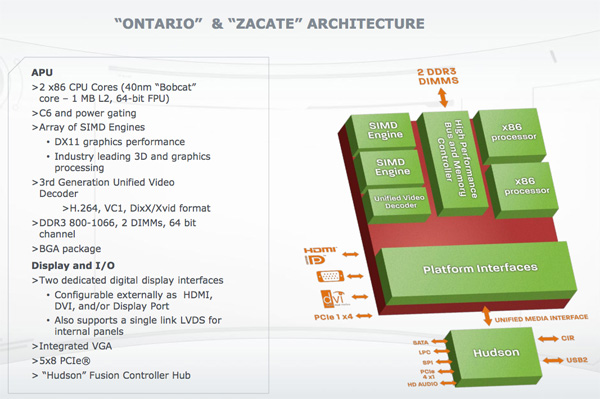








176 Comments
View All Comments
7Enigma - Friday, January 28, 2011 - link
Last line of the second page:"ASUS is working on a passively cooled E-350 motherboard which I should have within the next week."
silverblue - Friday, January 28, 2011 - link
Aha! I KNEW it!I knew somebody would replace the fan in no time at all... :) And losing that fan's power is even better for a system that doesn't drink too much in the first place.
nitrousoxide - Friday, January 28, 2011 - link
A fanless HTPC with decent performance...that's what people are expecting for years :)However I doubt if it is entirely silent as you still have to use case fans and noisy HDDs :)
silverblue - Friday, January 28, 2011 - link
If it's no louder than my Dreamcast, I can certainly live with that. :Pcybersax2 - Friday, January 28, 2011 - link
Nice review!I'm a bit surprised that the E350 isn't compared to an Atom D525 + ION2 combo (like the ZOTAC ZBOX ID41 uses).
silverblue - Friday, January 28, 2011 - link
He trolls every AMD launch article on here and Toms. Don't worry; unless he decides to actually contribute, he won't be at either place for long.ash9 - Friday, January 28, 2011 - link
Would be interesting to run a few optimized programs (OpenCL) and benchmark the differences. Hidden value - can it get any better?asH
haplo602 - Friday, January 28, 2011 - link
Hi AnandSeems nobody does answer the following questions:
1. Is the iGPU disabled automaticaly when a discreete one is plugged in ?
2. If not, does the system support Hybrid CF (or will it ) ?
3. Can the iGPU be used as a GPGPU device when a discreet GPU is plugged in and/or the iGPU is not driving a display ?
thanks ...
sebanab - Monday, January 31, 2011 - link
In my opinion the hole discrete GPU side of Zacate should be ignored completely.At the moment it does not bing any considerable advantages to add a discrete GPU, and if it will very few people would consider doing it.
But these questions will nonetheless be very interesting in the Llano review!
silverblue - Monday, January 31, 2011 - link
You definitely have a point. In most tests, it really doesn't look as if adding a discrete card would make any real difference, be it a 5570 or a 5870. The Bobcat cores don't look to be capable of handling enough data so perhaps the 6310 was the sweet spot for performance without the whole thing being too CPU-limited.Now if they added two more cores, perhaps we'd see a better GPU on-die, but the situation could still be the same. Then there's the matter of the 4x port.
I suspect the same will go for Llano; AMD knows that Phenom and Athlon II are CPU limited until the highest resolutions for most modern titles so there's little point giving them an overpowered GPU that is underfed. Putting a GPU on Bulldozer could be too expensive for the moment, but it's unlikely that Bulldozer would have issues feeding a relatively powerful graphics card.